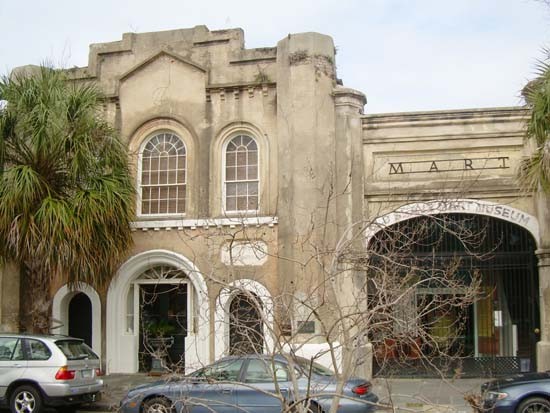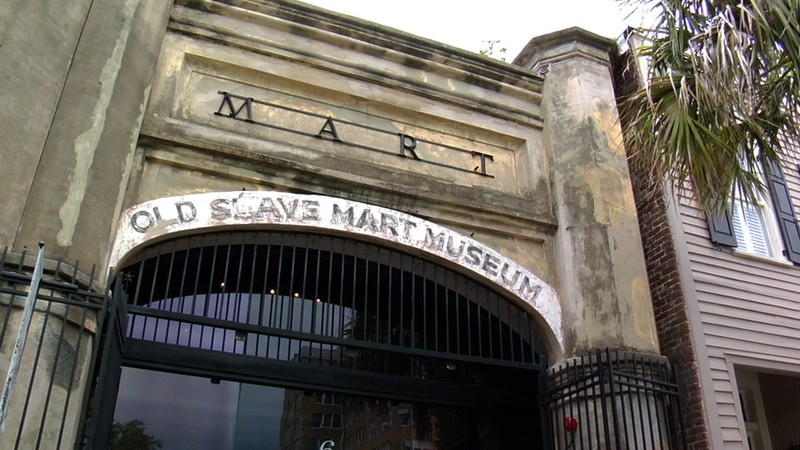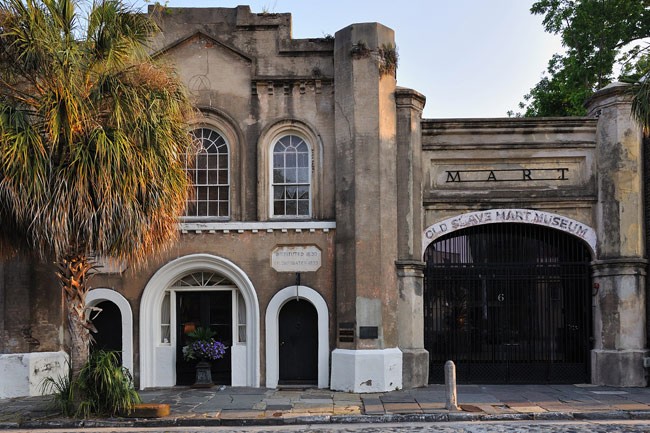Old Slave Mart Museum
Introduction
Text-to-speech Audio
Images
Charleston Slave Mart Exterior

Charleston Slave Mart Exterior

Charleston Slave Mart Exterior

Backstory and Context
Text-to-speech Audio
In 1856, the state of South Carolina outlawed the public auctioning of slavery. This legislation forced slave traders and slave owners to find alternative methods of dealing. Resultantly, private, enclosed facilities began to open on the streets surrounding the former public auction space.
A city councilman named Thomas Ryan opened this market, known as Ryan’s mart, for private slave auctioning. Ryan’s mart was comprised of a four-story holding jail for captured slaves, called a “barracoon”, a kitchen, and a morgue, called a “dead house”, for slaves that perished during captivity. There was such a large need for these types of private slave locations because at this time 38% of slaves entering the United States entered through Charleston. In 1865 Union troops entered Charleston. The slaves imprisoned at Ryan’s mart were released.
Currently, only one slave market building still remains. Several businesses operated in this space until 1938, when it was purchased by Miriam B. Wilson, who turned the location into a museum of African American history. In 1973 it was listed on the National Register of Historic Places.The Old Slave Mart Museum was the first African American museum and is often staffed by individuals who can trace their ancestry to Charleston slaves. Today the museum features artifacts and exhibits outlining South Carolina’s role in the slave trade and Charleston’s involvement.
Sources
Dixon, Nenie. "Old Slave Mart." National Park Service - National Register of Historic Places Nomination Form. May 2, 1975. http://www.nationalregister.sc.gov/charleston/S10817710090/S10817710090.pdf.
"Old Slave Mart Museum." City of Charleston, SC. Accessed 5/28/2015. http://charleston-sc.gov/index.aspx?NID=160.
